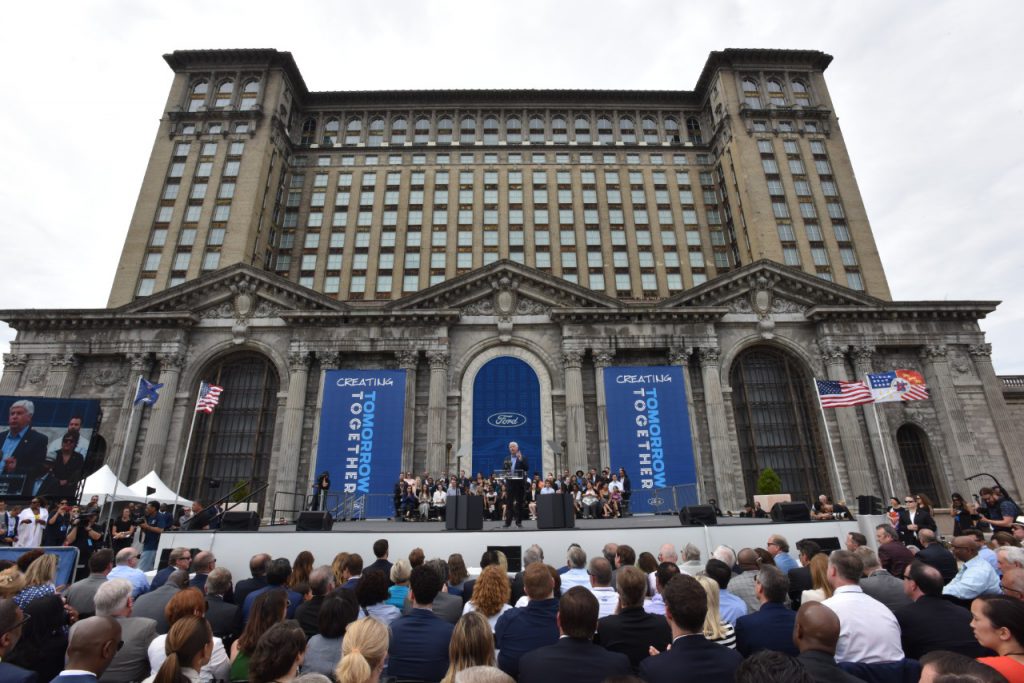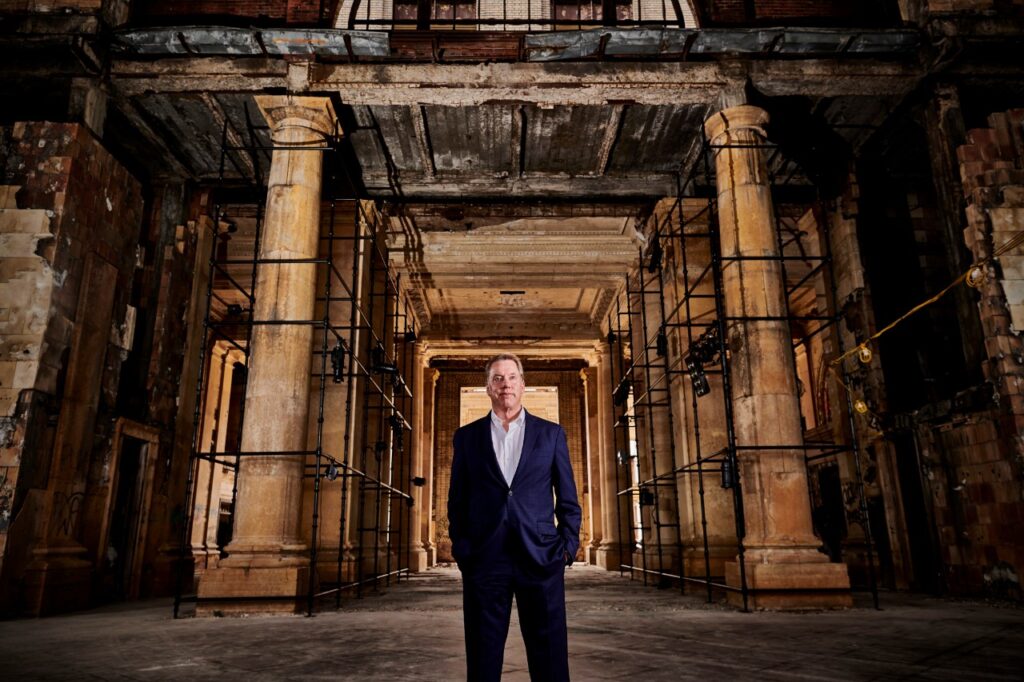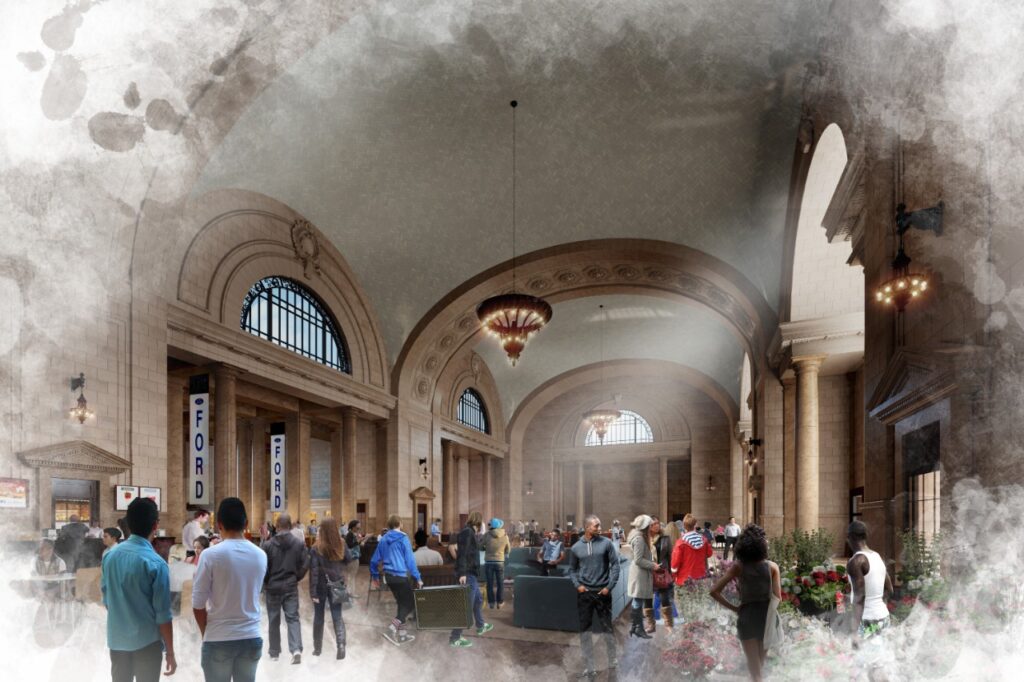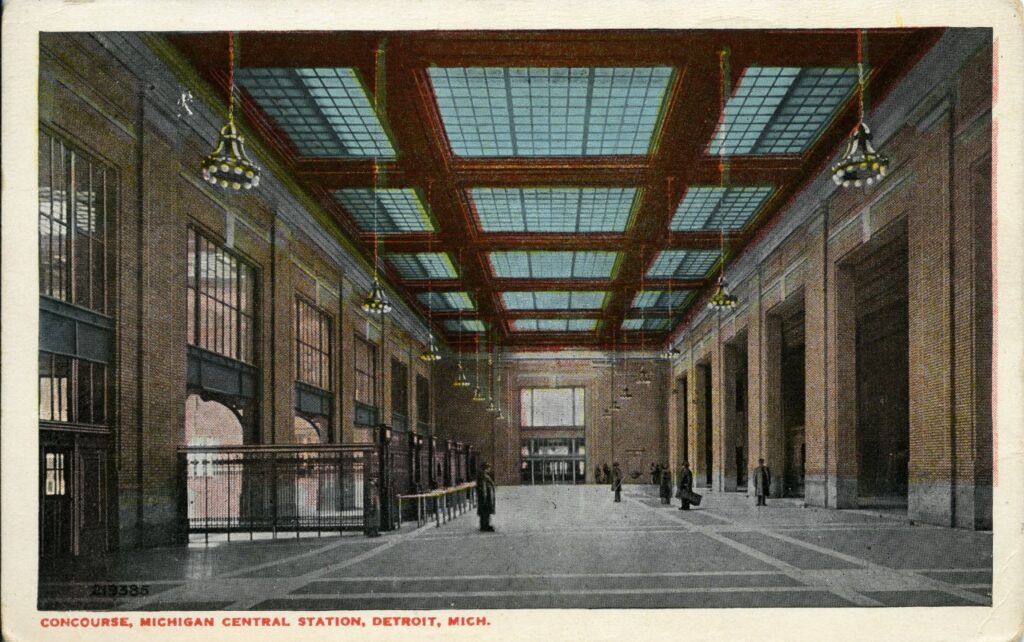
Ford officially unveils plans to turn the historic space into an innovation hub.
In the 1940s, more than 4,000 train passengers per day passed through Detroit’s historical Michigan Central Station. The 21-story Beaux-Arts style structure was a beacon of the Motor City’s skyline until it was closed in 1988.
During the past 30 years, Michigan Central Station became the poster child for the demise of this once great industrial city, as the neglected depot became a symbol of Detroit’s blighted neighborhoods.
But on Tuesday, a scion of Detroit industry told a crowd of nearly 5,000 onlookers that Michigan Central Station would once again become the best of Detroit innovation.
Bill Ford Jr., the executive chairman of Ford Motor Company and great-grandson of automaker Henry Ford, officially announced that the company has purchased Michigan Central Station, with grand plans to refurbish the three-story depot and its 18-story office space into a hub for advanced automotive technology.
“For 76 years, the train station was our Ellis Island,” Ford said. “Once the last train pulled out it became the symbol that hope left. It’s time to remake the station into a place of possibility again.”

The station is in an area about one mile west of downtown Detroit in an area known as Corktown. This historic neighborhood is named after Cork, Ireland, the birthplace of Henry Ford’s father. Like the station, Corktown has seen a massive loss of manufacturing facilities over the past 40 years.
Ford Motor Co. has decided to take advantage of available properties in the area that Henry Ford planned to expand his auto assembly lines during the late 1920s. The Great Depression thwarted those intentions, and Ford has called suburban Dearborn home for most of the company’s existence.
But Ford is back in the Detroit city limits, with plans to expand in an aggressive manner.
“Michigan Central Station is a place that in many ways tells the story of Detroit over the past century,” said Bill Ford, Jr. “We at Ford want to help write the next chapter, working together in Corktown with the best startups, the smartest talent and the thinkers, engineers and problem-solvers who see things differently – all to shape the future of mobility and transportation.”
Ford already has a team of 200 employees working at what is referred to as The Factory, a remodeled Corktown facility that is home to Ford’s electrical and autonomous vehicle business teams. The company has also purchased the former Detroit Public Schools Book Depository, two acres of vacant land near the old Tiger Stadium and the site of an old brass factory.
Ford plans to have at least 1.2 million square feet of space in Corktown and will share the land with other innovators of future technology.

“We want this to be a community space,” Ford said. “We want to bring in local shops and restaurants, entrepreneurs and small businesses. We want everyone to be involved.”
Once Michigan Central Station is refurbished, the 18-story tower will become the new offices of approximately 2,500 Ford employees. Remaining space in the tower will be leased, and that square-footage is expected to be able accommodate another 2,500 employees.
Michigan Central Station opened for train passenger service in January 1914. It was designed by the same architectural firms that created Grand Central Terminal in New York City. Both depots – considered sister stations – had the same detailing and were opened only six months apart.
But since the last train pulled out of the station in 1988, Michigan Central became a target of vandals, squatters, graffiti artists and photographers seeking to capture the image of Detroit’s urban decay.
The station was purchased by the corporation of wealthy Detroit businessman Matty Moroun in 1996, but was never developed, despite several proposals for the site. Moroun wanted to turn the station into a trade processing center due to its proximity to the Moroun-owned Ambassador Bridge, which connects Detroit and Canada. Moroun also considered renovating the train depot into a convention center and casino when legal gambling was allowed in Detroit in 1996.
In 2004, the city of Detroit pursued options to relocate its police headquarters to the crumbling building. And in 2010, it was considered as the new headquarters for the Michigan State Police that would also contain offices of the U.S. Department of Homeland Security.

In 2009, the Detroit City Council passed a resolution to demolish Michigan Central Station. The station was saved after a Detroit resident sued the city, citing the National Historic Preservation Act of 1966.
So, there it sat, the old Grand Dame of Detroit’s 20th century train travel, rotting away for all the world to see.
But, as they used to say in its advertising campaigns, Ford had a better idea.
Henry Ford thought the impossible was possible and looked to the future when building the world’s largest integrated factory at River Rouge in Dearborn in the early 1920s.
Ford President and CEO Jim Hackett echoed those sentiments at Tuesday’s announcement celebration.
“What Rouge was to Ford in the industrial age, Corktown can be for Ford in the information age,” Hackett said. “It will be the proving ground where Ford and our partners design and test the services and solutions for the way people are going to live and get around tomorrow, creating a Southeast Michigan mobility corridor that spans west from Dearborn to Ann Arbor and east to Detroit.”
Michigan Central Station has stood as a symbol of the best and worst of times in Detroit. The future of the train station may be Detroit’s biggest comeback moment yet.
